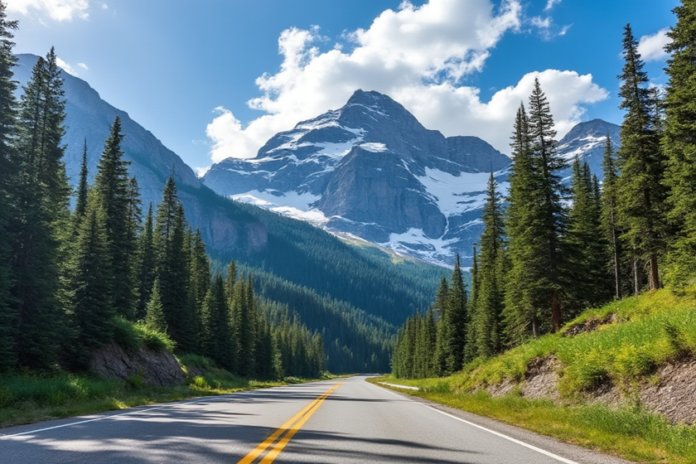A Cultural Heritage: The American Cowboy. The history of the American cowboy is deeply intertwined with the expansion and development of the United States, particularly in the 19th century.
The cowboy tradition has its roots in the Spanish vaquero tradition. When the Spanish arrived in the Americas, particularly in what is now Mexico, they brought cattle and their ranching techniques. The term “cowboy” itself comes from the Spanish “vaquero,” which means cowman.
As Americans moved westward, especially after the Mexican-American War (1846-1848), they adopted and adapted the vaquero techniques. The open range system of cattle ranching became prevalent.
The period from the end of the Civil War in 1865 to the late 1880s is often considered the heyday of the cowboy. This was when vast cattle drives from Texas to rail-heads in Kansas became common, driven by the demand for beef in the East.
Cowboys would drive large herds of cattle over hundreds of miles. These drives were tough, fraught with dangers like stampedes, river crossings, and sometimes hostile encounters with our First Nations people or cattle rustlers.
This era solidified the cowboy’s image: the wide-brimmed hat, boots with spurs, chaps, and the lasso. Their life was one of solitude, self-reliance, and a unique camaraderie formed on the trail.
The invention of barbed wire in the 1870s allowed landowners to fence off their property, which, along with the expansion of railroads, reduced the need for long cattle drives.
The harsh winters of the late 1880s, particularly the Great Die-Up of 1886-1887, where many cattle died in the cold, combined with overgrazing and a saturated beef market, led to a decline in the open range system.
While the long cattle drives ended, ranching did not. Cowboys continued to work on ranches, managing cattle, but now within fenced pastures.
As a Cultural Heritage, the American Cowboy skills turned into sport with the rise of rodeos, which started as informal competitions among cowboys to now being professional sports showcasing roping, riding, and other cowboy skills.
The cowboy became an enduring symbol of American freedom, rugged individualism, and the spirit of the frontier. This image was popularized by literature, Wild West shows (like Buffalo Bill’s), and later by Hollywood.
American cowboys have influenced everything from fashion (denim jeans, cowboy boots) to music (country and western), and their ethos has been romanticized in countless films, books, and songs.
While the romanticized cowboy of media often differs from historical reality, the core values of hard work, independence, and connection to the land remain central to the cowboy identity.
The history of the American cowboy reflects broader themes of American history: exploration, conflict, adaptation, and the mythologizing of the frontier life. Today, while the traditional cowboy lifestyle has largely transformed, the spirit of the cowboy continues to be celebrated and lives on in various forms across the U.S. and beyond.
Are western cowboys are a dying breed?
In the modern world of today, the sentiment that “western cowboys are a dying breed” echoes through various discussions and cultural portrayals, reflecting both a literal and metaphorical decline in the traditional cowboy way of life.
Efforts to preserve cowboy culture are evident in places like Hawaii with the paniolo, where there’s a conscious effort to maintain traditions through generations. This indicates a recognition of the cowboy as not just a job but a cultural heritage worth saving.
The traditional cowboy lifestyle faces economic challenges. Low salaries, the hard nature of the work, and the allure of urban life contribute to fewer young people taking up the mantle. This shift suggests a literal decrease in numbers of those pursuing traditional cowboy work.
In media and literature, like the references from “Longmire,” there’s an artistic acknowledgment of cowboys as a “dying breed,” which serves to romanticize and mourn the perceived decline of this icon of American heritage.
However, not all views are about decline. Some discussions, especially those seen on social media, argue that cowboys are not so much dying out as they are evolving. The spirit of the cowboy, with its associated values of independence, integrity, and connection to the land, persists in modern ranching, rodeo circuits, and even in broader cultural expressions.
The rodeo circuit, ranch work, and even the cultural identity of being a cowboy continue to thrive in certain communities. This suggests that while the traditional image might be less common, adaptations of the cowboy lifestyle are still very much alive.
Public sentiment indicates that there’s a mix of nostalgia, respect for the tradition, and a recognition of the harsh realities facing modern cowboys. There’s an acknowledgment of the decline in traditional terms but also an appreciation for those keeping the spirit alive in contemporary forms.
While the traditional notion of the western cowboy might be seen as diminishing due to cultural, economic, and lifestyle shifts, the essence and modified forms of cowboy culture persist. They adapt rather than disappear, suggesting that the “dying breed” narrative captures a transformation rather than an end. This nuanced perspective reflects both a respect for tradition and an understanding of cultural evolution. As a Cultural Heritage, the American Cowboy may change somewhat, but it won’t soon be passing away.





Does the U.S. Government plan to censor Social Media?
Does the U.S. Government plan to censor Social Media? There isn’t really any definitive evidence of a specific, universally applied government plan by the U.S. to censor social media in the traditional sense. However, there are several related developments and discussions worth noting.
The U.S. Supreme Court has dealt with cases concerning how government officials interact with social media platforms. A recent decision allowed the White House and other federal agencies to continue communicating with social media platforms about content deemed as misinformation. This ruling was more about the government’s ability to suggest content removal rather than directly censoring, focusing on the nuances of government influence versus coercion.
See: https://www.supremecourt.gov/opinions/23pdf/23-411_3dq3.pdf
Recently there’s been a mix of concerns about potential censorship, with some social media users interpreting government regulations or proposed laws as steps towards censorship, especially where legislation might define what constitutes misinformation. However, these concerns and sentiments do not confirm a unified plan but rather highlight public and political discourse around the topic.
With election season in full swing there are those that think Harris would attempt to form policies that might directly employ the use of government censorship on the social media platforms.
There are those out on the interwebs that might refute the validity of this video because of it’s age, but Harris has reiterated the same points just as recently as Sept 2, 2024 in a discussion with Jake Tapper.
Current concerns are that Harris might use law enforcement to hold social media platforms accountable for what’s deemed as misinformation or disinformation. These concerns often stem from interpretations of her statements or policy directions about combating misinformation and protecting democracy, which some see as potential censorship or government overreach into social media content moderation.
If we were going to try to define disinformation or misinformation, we might as well start with the politicians that are currently running for office. Politicians (on both sides) in our country are the largest purveyors of misinformation there is so one might be somewhat skeptical of the government attempting to decide just exactly what disinformation or misinformation is.
Harris’s campaign has indeed highlighted the fight against misinformation as part of her platform, suggesting that there might be some form of action aimed at social media companies. However, the specifics of how this would translate into government restrictions aren’t detailed in policy outlines that are available to the public.
There’s a notable anxiety among some social media users and commentators about potential censorship or restrictive government policies that could be interpreted as limiting free speech, based on the idea that Harris would enforce strict content controls.
The balance between free speech and preventing harm through speech is delicate and often contentious. While there are genuine cases where speech has led to legal action and imprisonment due to its threatening or hateful nature, the debate continues on where to draw the line to ensure that freedom of expression is not unduly restricted. This reflects a broader global conversation about the limits of free speech in the digital age, where words can have immediate and widespread impact.
Throughout the course of these misinformation discussions, I always remind people that they are their own best fact checkers.
If people would actually take the time to sit down and discover the truth, they might be less likely to fall into running with the mob.
Politicians can pretty much say anything they want when they’re on the campaign trail (pandering for votes). It’s not until they’re actually elected into office that we can learn of their actual real-time plans. If those plans are too far out in left field (no pun intended) then we’ve got the Congress and the Supreme Court to help balance it all out.